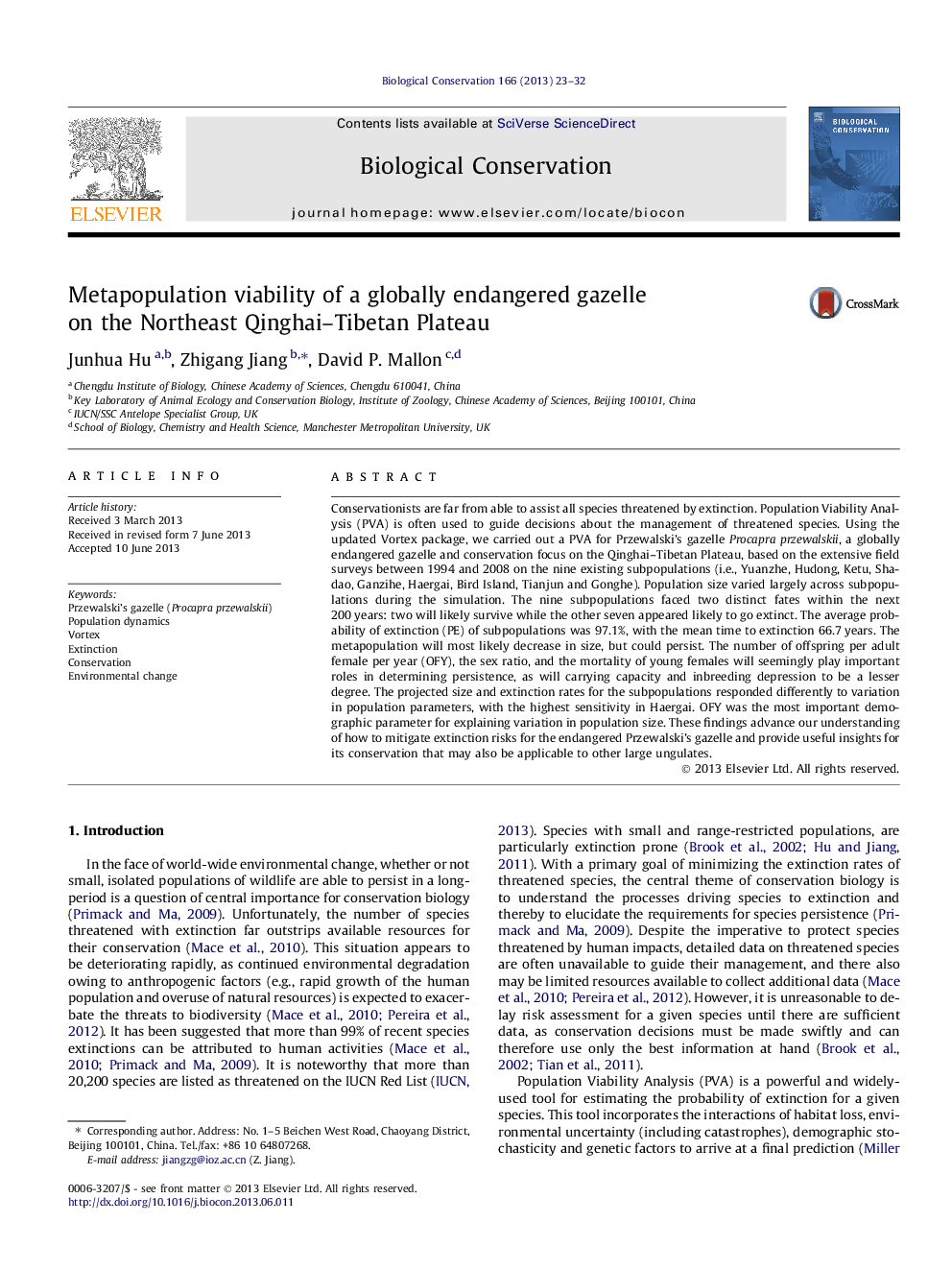| Article ID | Journal | Published Year | Pages | File Type |
|---|---|---|---|---|
| 6300763 | Biological Conservation | 2013 | 10 Pages |
Abstract
Conservationists are far from able to assist all species threatened by extinction. Population Viability Analysis (PVA) is often used to guide decisions about the management of threatened species. Using the updated Vortex package, we carried out a PVA for Przewalski's gazelle Procapra przewalskii, a globally endangered gazelle and conservation focus on the Qinghai-Tibetan Plateau, based on the extensive field surveys between 1994 and 2008 on the nine existing subpopulations (i.e., Yuanzhe, Hudong, Ketu, Shadao, Ganzihe, Haergai, Bird Island, Tianjun and Gonghe). Population size varied largely across subpopulations during the simulation. The nine subpopulations faced two distinct fates within the next 200Â years: two will likely survive while the other seven appeared likely to go extinct. The average probability of extinction (PE) of subpopulations was 97.1%, with the mean time to extinction 66.7Â years. The metapopulation will most likely decrease in size, but could persist. The number of offspring per adult female per year (OFY), the sex ratio, and the mortality of young females will seemingly play important roles in determining persistence, as will carrying capacity and inbreeding depression to be a lesser degree. The projected size and extinction rates for the subpopulations responded differently to variation in population parameters, with the highest sensitivity in Haergai. OFY was the most important demographic parameter for explaining variation in population size. These findings advance our understanding of how to mitigate extinction risks for the endangered Przewalski's gazelle and provide useful insights for its conservation that may also be applicable to other large ungulates.
Related Topics
Life Sciences
Agricultural and Biological Sciences
Ecology, Evolution, Behavior and Systematics
Authors
Junhua Hu, Zhigang Jiang, David P. Mallon,
